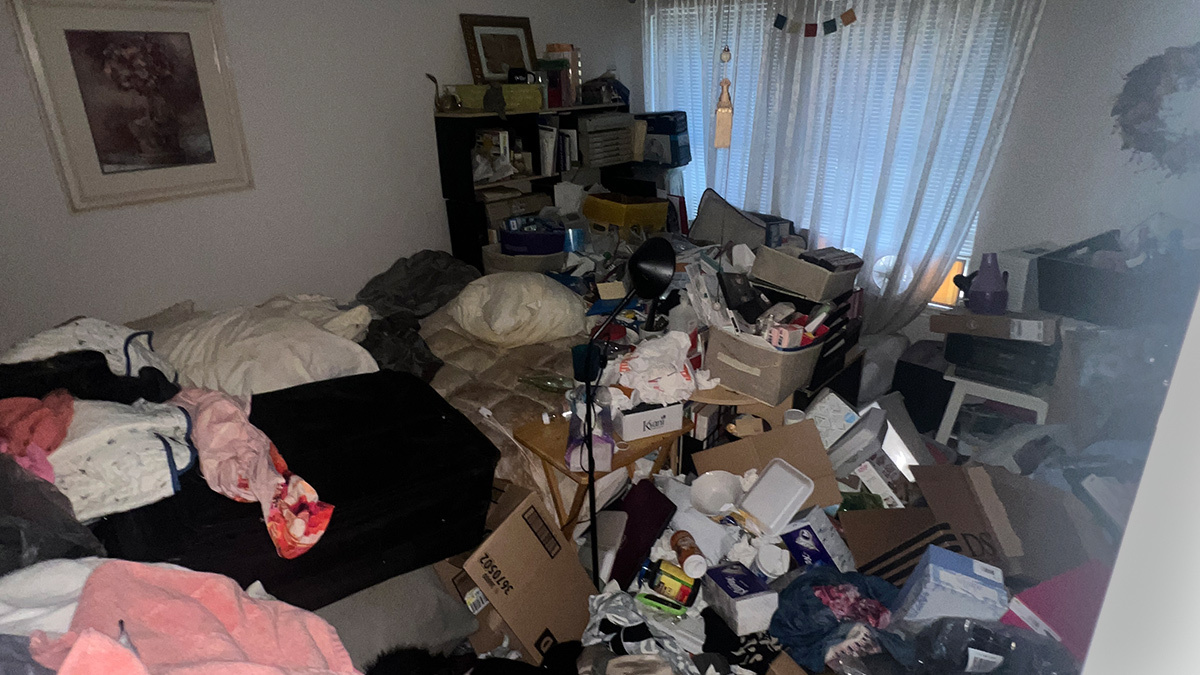
How to Approach Hoarding Cleanup
Hoarding cleanup is one of the most challenging tasks to tackle. Along with the physical mess, there are often emotional and psychological complexities to manage. It’s a sensitive process that requires careful planning, empathy, and a systematic approach. Whether you’re helping a loved one or tackling your own space, we’ll walk you through the practical steps that make the cleanup process manageable and effective.
The Complexity of the Cleanup Process
Hoarding situations must be approached with compassion and no judgment, as the owner’s attachment to possessions can often make removing these items difficult. In addition to handling each case with care, it’s essential to have a process in place that ensures items are removed safely, and the space is left in a habitable condition for future use.
Assess the Situation
Before starting, you need to understand exactly what you’re working with. The clutter in Hoarding situations can often be overwhelming because of the sheer volume. Hazards can also put those undertaking the cleanup at risk, so a thorough assessment is essential.
When entering a hoarding situation, we recommend:
- Complete a thorough walkthrough of the property to prepare for what’s to come.
- Identify potential hazards, such as fire hazards, structural instability, and unsanitary conditions. Prioritize creating safe exit paths in case of emergencies to ensure the safety of the cleanup crew.
- Consider the emotional aspects of the cleanup. Hoarding often has deep-rooted psychological causes, and the intent is to help, not hurt, the space’s owner.
Create a Staging Area
Not everything in a hoarding space is trash, so you’ll need a designated space to sort through items away from any uncleaned areas. We recommend using an outdoor space like a yard or patio. If an outdoor space is unavailable or the weather keeps you indoors, clear the largest or most central room as early in the process as possible to use as your staging area. Cover the area with a large tarp that can be used to hold items as they’re being sorted into categories: keep, donate, recycle, or discard.
Start Small and Work Systematically
Frequently, the overwhelming nature of the task at hand is what caused the hoarding situation to develop. Don’t expect to tackle everything at once. Rather, break the cleanup into manageable tasks so you don’t experience the same emotions that contributed to the mess.
- Once you have a staging area designated, begin with a small area, like the bathroom, that’s less likely to cause emotional triggers.
- Work from top to bottom in each room, clearing items on furniture before tackling the floor.
- Focus on one room at a time to generate a sense of accomplishment.
Remove Obvious Trash First
You’ve got to start somewhere, and we recommend beginning with items that are obviously trash. These items don’t need to go through the sorting process, so you’ll quickly reduce clutter, providing motivation and making the process feel more manageable. Be sure to check pockets, bags, envelopes, and papers for potentially valuable items before discarding them.
Handle Items with Care
Each item in a hoarding situation is someone’s possession, so it’s important to be thorough and considerate. The value we assign may be different than that of the owner, so if there’s a question, place that item in the staging area so it can be reviewed later. Some items, such as large furniture and appliances, must be temporarily removed to facilitate deep cleaning. These will need to be handled properly to ensure they remain in their existing condition once they’re returned to their proper place.
Address Repairs and Deep Cleaning
Once the bulk of the clutter has been removed and categorized, focus on restoring the space to habitable conditions. Inspect flooring, walls, and structures for damage that may need to be repaired. In severe cases, professional services for deep cleaning or sanitizing may be necessary.
Seek Professional Help When Needed
You don’t have to tackle a hoarding situation on your own. Don’t hesitate to bring in experts like Mean Green Junk Removal to handle the heavy lifting. Depending on the situation, other specialized professionals may be necessary, like a biohazard cleaning service. Mental health professionals may also be needed to offer support in addressing the underlying causes of hoarding.
Establish Ongoing Maintenance
Once the cleanup is done, the goal is to prevent the space from getting into a hoarding situation again.
Establish a routine and seek guidance. We recommend:
- Creating a regular cleaning and decluttering schedule.
- Developing healthier attitudes towards possessions and space utilization.
- Consider ongoing therapy or support groups to address hoarding tendencies.
Working with Mean Green Junk Removal
Remember, hoarding cleanup is not just about physical decluttering; it’s a process that involves emotional support and understanding. At Mean Green Junk Removal, we approach the task with patience, empathy, and a focus on long-term change, ensuring you feel understood and supported as we work together to create a safer, more comfortable living environment.
Mean Green Junk Removal is a full-service, professional solution for hoarding. We commit to being kind and would never make light of the situation at hand. When you hire Mean Green, we’ll handle removing and hauling all items that aren’t staying in the home. We then recycle, donate, or sustainably dispose of each item taken away.
As a family-owned, veteran-led business, we understand the importance of being respectful and trustworthy, especially when we’re being brought into your home. Our team is courteous, on time, and never falters in hard work. Contact Mean Green Junk Removal today to learn how we can help you create a clutter-free space you’ll be proud of.
